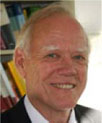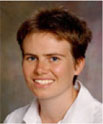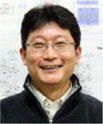Editorial
Curt WentrupEditor-in-Chief, Australian Journal of Chemistry. School of Chemistry and Molecular Biosciences, The University of Queensland, Brisbane, Qld 4072, Australia. Email: wentrup@uq.edu.au

Curt Wentrup was educated at the University of Copenhagen (Cand. Scient. 1966; D.Sc. 1976) and the Australian National University (Ph.D. 1969). He held an assistant professorship at the Université de Lausanne, Switzerland, and a professorship at the Universität Marburg, Germany, before returning to Australia in 1985 as professor of organic chemistry and head of the organic chemistry section at the University of Queensland, where he is now emeritus professor. Since 2009 he has been chair of the National Committee for Chemistry of the Australian Academy of Science. He is a Fellow of the Australian Academy of Science and has published over 300 publications. His research interests are in the fields of both experimental and computational chemistry of reactive intermediates and unusual molecules, flash vacuum thermolysis, and photochemistry, and he collaborates extensively with groups in Denmark, France, Germany, Singapore and Switzerland. |

Associate Professor Michelle Coote leads the Computer-Aided Chemical Design research group at the Research School of Chemistry, Australian National University. She joined the ANU in 2001, following post doctoral work at the University of Durham, UK (1999–2001). She is a graduate of the University of New South Wales, where she completed a B.Sc. (Hons) in industrial chemistry (1995), followed by a Ph.D. in polymer chemistry (2000). She has published extensively in the fields of polymer chemistry, radical chemistry and computational quantum chemistry, and is a member of the ARC Centre of Excellence for Free-Radical Chemistry and Biotechnology. She has received many awards, including the 2001 IUPAC prize for young scientists, the 2000 Cornforth Medal and 2006 Rennie Medal of the Royal Australian Chemical Institute, and the 2010 Le Fevre Memorial Prize of the Australian Academy of Science. |

Evan Bieske is a physical chemist based since 1995 at the School of Chemistry, University of Melbourne. His research entails using laser spectroscopy to investigate the properties of charged molecules, complexes, clusters and nanoparticles in the gas-phase. These research interests were initiated during Ph.D. studies, under the supervision of A. E. W. Knight at Griffith University, Australia, and extended while working as a research fellow with J. P. Maier in Basel, Switzerland. When not working he prefers to clamber about on rock faces, an activity he undertakes at a progressively lower level. He is currently an ARC Australian Professorial Fellow. |

Associate Professor Jonathan White, Crystallographic Editor. Jonathon White leads a laboratory head located at the Bio21 Institute. Jonathan undertook his B.Sc.(Hons) (1982) and Ph.D. (1984) at the University of Canterbury, New Zealand. In 1985–1988 he was a Post Doctoral Fellow at University of Bristol, and in 1989–1990 he was a Post Doctoral Fellow at the Research School of Chemistry, Australian National University. In 1991 he was appointed lecturer in chemistry at the University of Melbourne. In 1994 he was promoted to Senior Lecturer and in 2003 promoted to Associate Professor and Reader. His research interests include physical and structural organic chemistry, radiopharmaceuticals, and the design and synthesis of DNA-binding radiomodifiers for use in radiation treatment of cancer. |

Manabu Abe was born in Sakai City, Osaka Prefecture, Japan, in 1966. He received his Ph.D. from the Kyoto Institute of Technology (Professor Akira Oku), studying the oxidative ring-opening reaction of cyclopropanone acetals and its application to organic synthesis. In 1995, he obtained an academic position at Osaka University (Professor Masatomo Nojima's group). In 2007, he moved to Hiroshima and became a Full Professor in Organic Chemistry at the Department of Chemistry, Graduate School of Science, Hiroshima University (HIRODAI). From 1997 to 1998, he was an Alexander-von-Humboldt (AvH) fellow with Professor Waldemar Adam at the Universität Würzburg. His research focuses on reactive intermediates chemistry, especially on singlet as well as triplet diradicals, and electronically excited states. |
Australian Journal of Chemistry 64(1) 1-2 https://doi.org/10.1071/CH11006
Published: 14 January 2011
This first issue of Australian Journal of Chemistry in 2011 is at the same time our first issue in the International Year of Chemistry. We are planning a series of exciting Research Fronts on a diverse range of subjects during the year, starting with Biophysical Chemistry in this January issue, which is based on the first Australian Biophysical Chemistry Workshop held at the University of Adelaide in April 2010 and organised by Ron Clarke (University of Sydney) and Tak Kee (University of Adelaide). The February issue will contain a research front on photoactive and electroactive dendrimers assembled by Alberto Credi (University of Bologna).
The Journal has published a large number of Research Fronts in 2010, virtually one in every issue. This is important, as these papers tend to be very popular and authoritative, often providing a valuable entry point into a particular field of chemical science. However, we do not want to give the impression that we do not want spontaneous submissions of research papers in all disciplines of chemistry. Such papers are most welcome, and our mission is quite definitely to publish good science in all fields.
The Journal has expanded during the past 2 years. We now publish approximately 220 papers and approximately 1700 pages a year, and the rejection rate is over 60%. There is scope for expansion of the number of pages and papers, but high quality and stringent refereeing will remain of paramount importance.
During 2011 we have appointed four new Associate Editors, namely Michelle Coote (theoretical/computational chemistry; Australian National University), Evan Bieske (physical chemistry; University of Melbourne), Jonathan White (with particular responsibility for checking X-ray structures; University of Melbourne) and Manabu Abe (Associate Editor for Japan; University of Hiroshima). Further Associate Editors in other regions will be appointed as the need arises. The Journal has come a long way since its modest start as the Australian Journal of Scientific Research in 1948 – we now publish papers from virtually all countries in the world and internationalization is definitely here to stay.
It is my pleasure to thank you, the authors, reviewers and editors for maintaining high standards and thereby making it possible for us to publish high-quality papers of interest to the readership. I extend my very best wishes to you all for a happy, successful and enjoyable International Year of Chemistry 2011, where we hope to see further, significant strengthening of the Journal.


